From ancient stone structures that whisper tales of prehistoric Ireland to grand monuments dedicated to Irish independence and artistry, the monuments in Ireland offer a window into the country’s vibrant heritage. No matter if you explore Dublin’s city centre or its countryside, these monuments stand for the way Ireland has changed over the years. Their enduring presence across towns, cities, and remote landscapes tells the story of a nation shaped by myth, resilience, and revolution. Every monument represents how Ireland’s continuing identity is formed through its long history of struggle, religion and creativity.
Top 12 Monuments In Ireland You Must Visit
Ireland’s monuments showcase the country’s rich history and culture. These are the must-see attractions to give you a peek into its ancient and mediaeval history in Ireland.
1. The Spire Of Dublin
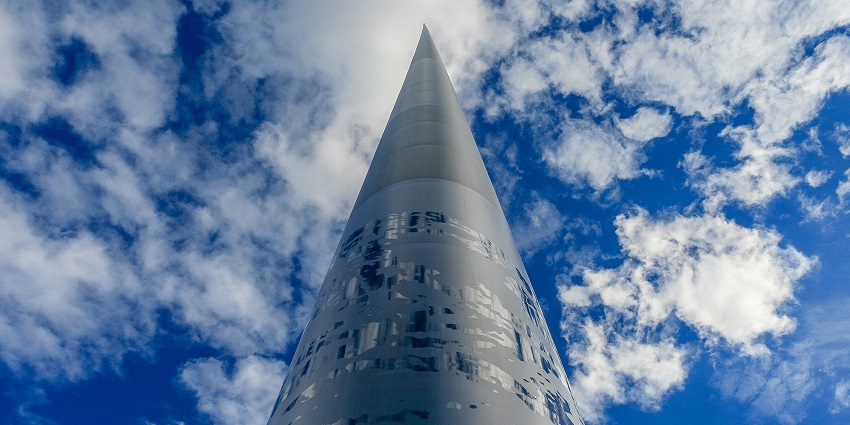
Photo: Almbauer / Wikimedia Commons
On O’Connell Street in Dublin stands the Spire of Dublin, known as the Monument of Light. At 120 metres high, it is the tallest sculpture in the world and was finished in 2003 when the urban renewal plan was launched. The slender spire reflects sunshine in the day and softly radiates light at night, which makes it a current representation of the city’s buzz. Soon after Nelson’s Pillar was destroyed, Ian Ritchie Architects designed the sculpture that stands here today. The Spire is exceptional among many monuments in Ireland, as it reflects the country’s modern attitude and ambition.
Best Suited For: Architecture lovers, Urban explorers
Major Attraction: 120-meter tall stainless steel spire
Timings: 24*7
2. General Post Office, GPO
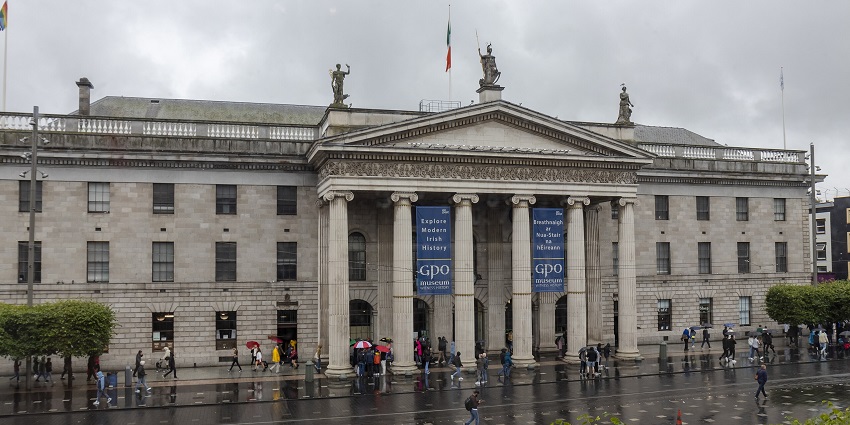
Photo: ClaireWhi / Wikimedia Commons
The General Post Office (GPO) on O’Connell Street is a well-known and historic building in Ireland. In 1818, the building was finished and featured six Ionic columns on a grand neoclassical façade designed by Francis Johnston. During the 1916 Easter Rising, the headquarters for the Irish rebels was at the GPO. Visible bullet marks on its outside remind everyone of the troubles of Ireland’s independence struggles. A museum inside the GPO tells about the events of the Rising and Ireland’s postal history. Among all the monuments found in Ireland, the GPO represents our nation’s pride, resistance and strong will.
Entry Fee: €15 / ₹ 1,350
Best Suited For: History buffs, Families
Major Attraction: 1916 Easter Rising exhibits
Timings: 10 AM – 5:30 PM
3. The Daniel O’Connell Monument
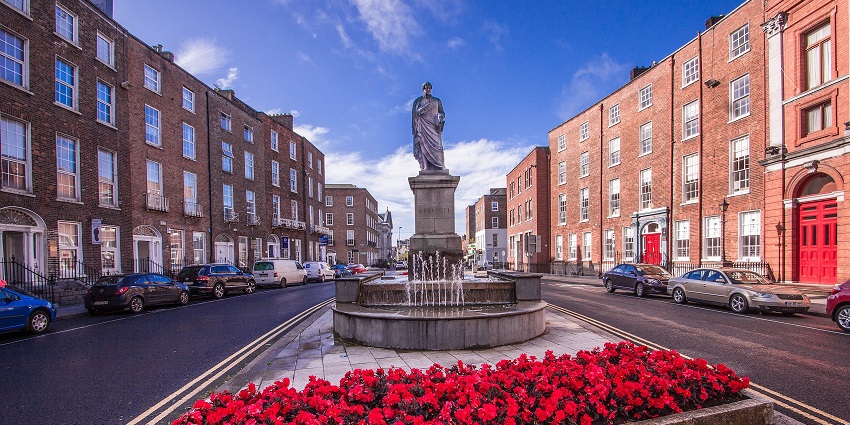
Photo: Stevesphotography / Wikimedia Commons
At the southern terminus of O’Connell Street in the centre of Dublin is the Daniel O’Connell Monument, which stands as an honour to one of Ireland’s epic political figures. In 1882, the monument was unveiled, showing a large bronze statue of Daniel O’Connell, who was called “The Liberator” for his work in gaining freedom for Catholics in the 1800s. Around the base are detailed figures illustrating patriotism, courage and fidelity, as well as a series of friezes highlighting major moments from his life. The monument was made by John Henry Foley, and it symbolises Ireland’s fight for civil rights and who they are as a nation. Set in the capital city, the O’Connell Monument is well known for its political meaning as well as its importance in the country’s history.
Best Suited For: History lovers, Tourists
Major Attraction: Bronze statues and symbolic carvings
Timings: 24*7
4. The Wellington Monument
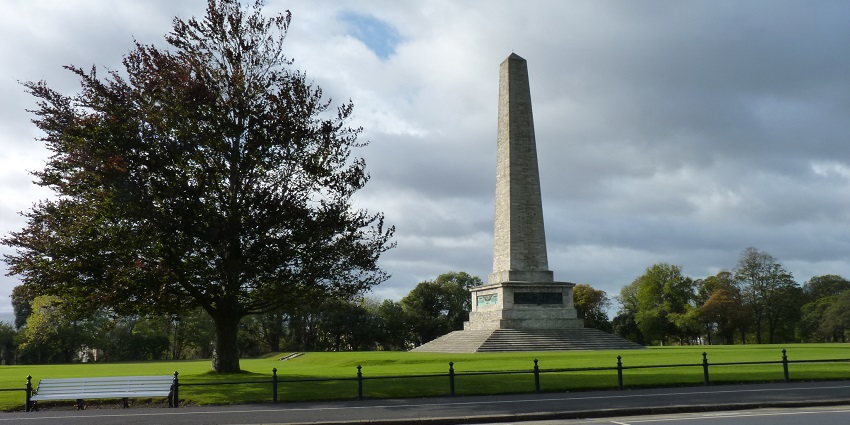
Photo: James Allan / Wikimedia Commons
At 62 metres high, the Wellington Monument is the tallest obelisk in all of Europe and is found in Dublin’s Phoenix Park. Construction began to remember Arthur Wellesley, the 1st Duke of Wellington and an Irishman who achieved victory at Waterloo in 1815. Sir Robert Smirke, an architect, designed the building, and work began in 1817, although payment irregularities prevented it from finishing until 1861. The monument has a base with four bronze plaques, and three of those show famous events in Wellington’s military history. The parkland around it helps remind us of Ireland’s relationship with Britain’s military history. This monument is one of the biggest and most famous monuments in Ireland.
Best Suited For: Families, Photographers
Major Attraction: 62-metre obelisk
Timings: 24*7
5. Garden Of Remembrance

Photo: Oliver Gargan / Wikimedia Commons
Located in the heart of Dublin, Parnell Square, the Garden of Remembrance is a tranquil memorial to those who died for Irish freedom. The garden was inaugurated in 1966, at the 50th anniversary of the Easter Rising; the garden stands for everyone who disagreed with British dominion in Ireland. One standout feature is a touching bronze relief by Oisín Kelly, which shows swans turning into humans to represent rebirth and sacrifice, inspired by the Irish legend of the children of Lir. In contrast, the big cross-shaped pool clearly mirrors this serene scene, pasted with a verse by Liam Mac Uistin on one wall. Ireland has a plethora of monuments, and rightly, the Garden of Remembrance, as a monument with a meaning, stands out for its symbolic design and a sombre tribute to the national heroes.
Best Suited For: Peace seekers, Cultural tourists
Major Attraction: Reflecting Pool and Sculpture of Children of Lir
Timings: 8:30 AM – 6 PM
6. National War Memorial Gardens

Photo: Harry Mitchell / Wikimedia Commons
The National War Memorial Gardens in Dublin, at Islandbridge, honour the 49,400 Irish soldiers who died in World War I and were designed by Sir Edwin Lutyens. Each monument has lovely lawns, rose gardens, and granite rooms that each display the names of the soldiers remembered there. The sunken garden and adjacent classical buildings show a feeling of both quiet and peace. Besides being a place to honour the dead, Habsburg Park has architectural and historical importance as well. Apart from other famous monuments in Ireland, the National War Memorial Gardens receive notice for acknowledging the sacrifice and offering visitors a place to contemplate quietly.
Best Suited For: Veterans, Families, Nature lovers
Major Attraction: Rose gardens and granite bookrooms
Timings: 8 AM – Sunset
7. Hill Of Tara
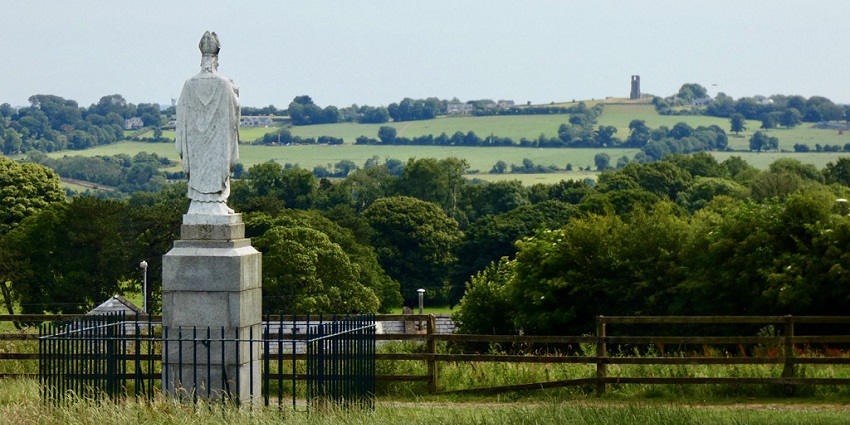
Photo: Uppa66 / Wikimedia Commons
The Hill of Tara in County Meath is a really important historical spot in Ireland. It was once the home of the High Kings and served as a key place for politics and spirituality during the Iron Age. The site consists of a number of earthworks, including the Mound of the Hostages, one of Ireland’s most ancient passage tombs that’s over 5,000 years old. There’s also the Stone of Destiny, or Lia Fáil, that sits at the top and was said to roar when the true king touched it. From the Hill of Tara, you can see amazing views of the surrounding countryside, which really shows how important it was in Irish myths and governance. The Hill of Tara is a strong reminder of Ireland’s ancient civilisation and its rich history.
Best Suited For: Mythology fans, Hikers
Major Attraction: Lia Fáil or Stone of Destiny, ancient ring forts
Opening Hours: 24*7
8. Newgrange
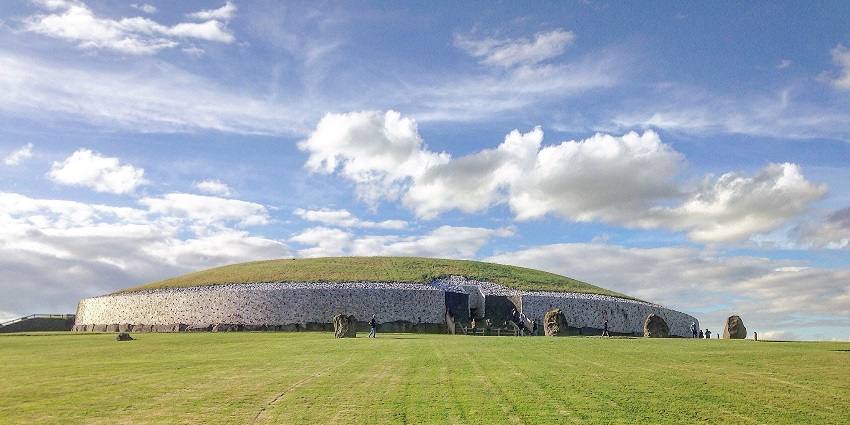
Photo: Tjp finn / Wikimedia Commons
Built in the Boyne Valley of County Meath around 3200 BCE, Newgrange is a very old Neolithic monument that is older than Stonehenge and the Egyptian pyramids. The tomb is 85 metres long and rises to 13 metres. The 19-metre passage through the site opens into a central space, the roof of which has kept out water for over 5,000 years. The winter solstice sunrise shines directly through the entrance, lighting up the chamber interior for only a few minutes, highlighting the excellent astronomy of ancient Egypt. Surrounding the mound are 97 kerbstones that are decorated with elaborate carvings. Newgrange is one of the world’s best-known prehistoric monuments and highlights the creative and spiritual abilities of Ireland’s past inhabitants.
Best Suited For: History buffs, families, spiritual seekers
Timings: 9 AM – 5 PM
Major Attraction: Winter solstice light event, guided chamber tours
9. Muckross Abbey
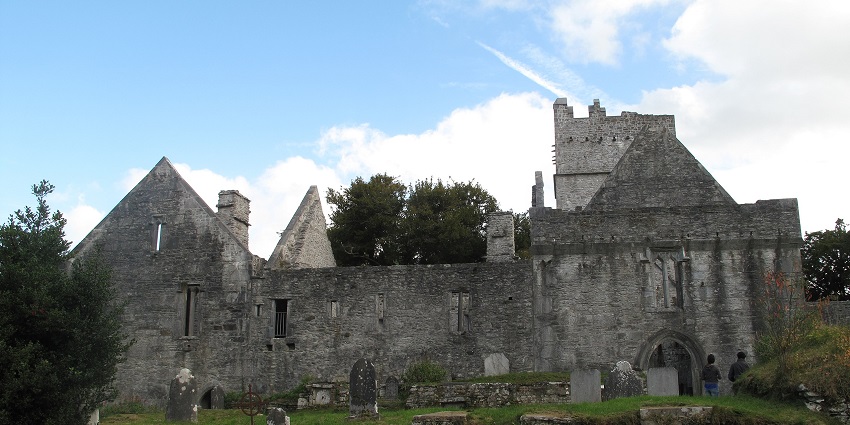
Photo: Anna Maria 4574 / Wikimedia Commons
Muckross Abbey, placed in the County Kerry town of Killarney National Park, is a carefully maintained Franciscan friary created in 1448. Nearby, old yew trees and beautiful greenery make the abbey famous for its peaceful air and Gothic buildings. The monks’ church holds a central cloister, high vaults above and a grand courtyard with an old yew tree. Although it has been raided and restored many times over the centuries, its overall structure is still standing, so visitors can enter the church, climb the tower and view the living quarters. Several famous Gaelic poets have chosen to be buried in the abbey. As one of the most dramatic monuments in Ireland, Muckross Abbey gives viewers a moody yet beautiful look at mediaeval Irish monasteries.
Best Suited For: Spiritual seekers, Photographers
Major Attraction: Gothic ruins and ancient yew tree
Timings: 8 AM – 8 PM
10. Glendalough Monastic City
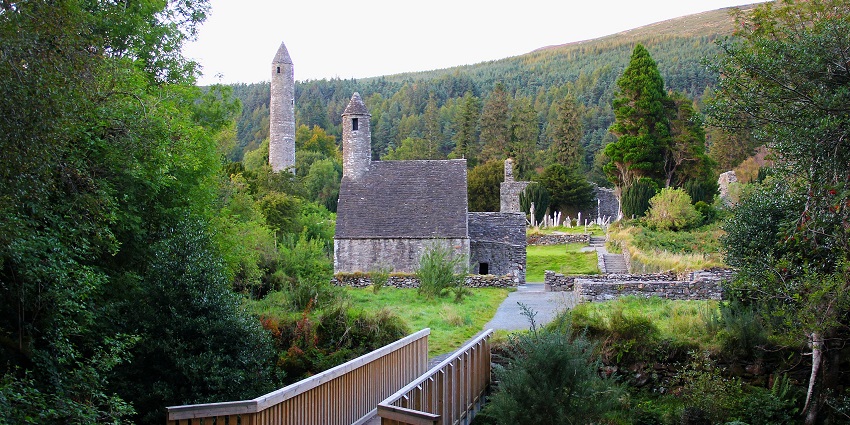
Photo: Jan-Herm Janßen / Wikimedia Commons
Glendalough Monastic City, located in County Wicklow, is one of the key early Christian sites in Ireland. It was started back in the 6th century by St Kevin and is set in a beautiful glacial valley surrounded by lakes and forests. It boasts a well-preserved round tower, stone churches, crosses, and ancient graveyards disciplined over the centuries by religious devotion. At a height of 30 metres, the round tower was a bell tower and a refuge during Viking raids. Other major structures here are St Kevin’s Church, the so-called “Kitchen”, and the Cathedral of St Peter and St Paul. Glendalough monastic city is one of the most visited monuments in Ireland. It draws pilgrims, historians, and tourists who come here to enjoy the considerable spiritual atmosphere and scenic beauty while strolling through its peaceful and historic grounds.
Best Suited For: Nature lovers, Pilgrims
Major Attraction: Round tower, stone churches
Timings: 24*7
11. Kylemore Abbey
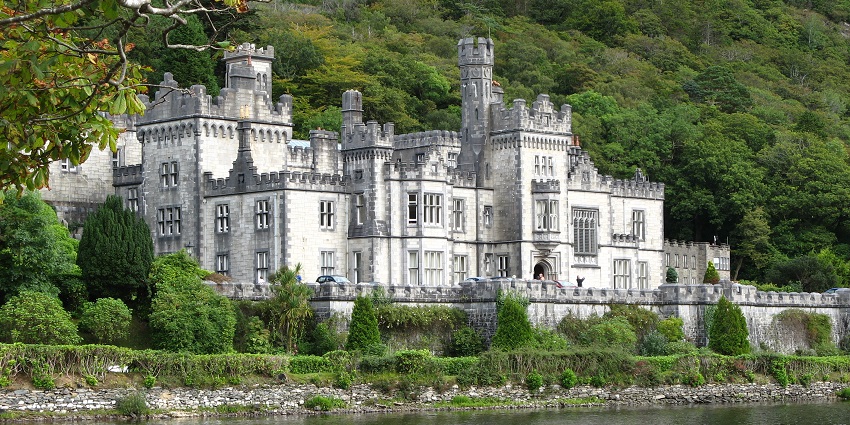
Photo: Textman / Wikimedia Commons
Kylemore Abbey in Connemara, County Galway, is one of those stunning spots in Ireland you can’t miss. In the late 1800s, it was constructed as a House for Mr. Mitchell Henry and Mrs Margaret. Later, in 1920, it turned into a Benedictine monastery. The abbey features beautiful neo-Gothic architecture and is set against a lovely lake and green mountains, making it feel like a scene from a postcard. When you visit, you can check out the nicely restored rooms, wander through the six-acre Victorian garden, and see the Gothic Church dedicated to Margaret. Kylemore Abbey feels like a peaceful retreat and is a great example of Ireland’s architectural history. It’s not just another monument; it has a rich story and gorgeous views that make it special.
Best Suited For: Nature lovers and history buffs
Major Attractions: Neo-Gothic Church, Victorian Walled Garden, Mausoleum
Timings: 10 AM – 5:30 PM
12. Rock Of Cashel
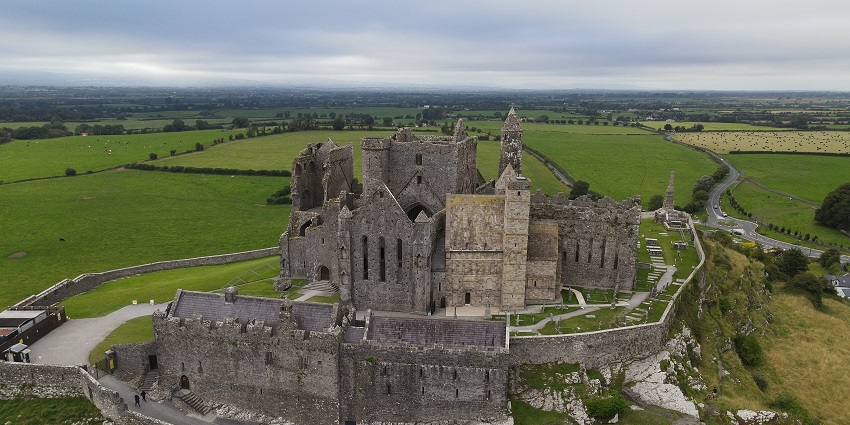
Photo: Jonjobaker / Wikimedia Commons
County Tipperary is home to the Rock of Cashel, formerly known as St Patrick’s Rock, which is one of the best-known mediaeval structures in Ireland. High on a limestone hill, this complex comprises a round tower, Cormac’s Chapel, a cathedral, a graveyard with tall crosses and a castle. Some centuries ago, the Kings of Munster ruled from here, and its name is connected to St Patrick for helping convert King Aengus to Christianity in this spot. Built in the 12th century, Cormac’s Chapel is among the oldest and most carefully preserved Romanesque styles in Ireland. The Rock of Cashel attracts many tourists because it gives great views and links Ireland’s past to both spiritual life and royalty.
Best Suited For: History lovers, Architecture fans
Major Attraction: Medieval cathedral, Cormac’s Chapel
Timings: 9 AM – 5:30 PM
From the old burial sites to today’s sculptures, monuments in Ireland link Ireland’s traditions to its recent past. From the impressive Rock of Cashel to the simple yet striking Spire, each site brings its own piece of Irish history and identity. If you’re thinking about exploring the monuments in Ireland, check out TripXL and let these monuments share their stories with you.
Cover Photo: William Murph / Wikimedia Commons


 WhatsApp
WhatsApp
 Twitter
Twitter









